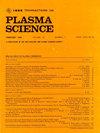水分含量对中心电极结构DBD等离子体助煤燃烧特性的影响
IF 1.5
4区 物理与天体物理
Q3 PHYSICS, FLUIDS & PLASMAS
引用次数: 0
摘要
全球能源结构以化石燃料为主,煤炭是能源供应的主要来源。提出了一种介质阻挡放电产生的非平衡等离子体与水添加剂相结合的燃烧方法。研究了不同水雾化速率对等离子体辅助煤燃烧过程中放电功率、质量损失和温度变化的影响。研究结果表明,在13.5 kV的固定电源电压幅值下,随着水雾化速率从0 ~ 3.0 mL/min增大,放电电流的不对称性增大,放电功率减小。当水雾化速率为1.2 mL/min时,质量损失、温度、燃烧面均达到最大值。过量的水抑制煤的燃烧。与不添加水的情况相比,在电源电压幅值为13.5 kV、水雾化速率为1.2 mL/min时,煤的燃烧速率明显提高,燃烧极限延长。本文章由计算机程序翻译,如有差异,请以英文原文为准。
Moisture Content’s Influence on Characteristics of DBD Plasma-Assisted Coal Combustion With Central Electrode Structure
The global energy structure is primarily dominated by fossil fuels, with coal being the main contributor to energy supply. This article proposes a combustion method based on the combination of nonequilibrium plasma generated by medium barrier discharge and water additives. The influence of different H2O atomization rates on discharge power, mass loss, and temperature variation during plasma-assisted coal combustion processes was investigated. The research findings indicate that, under a fixed power supply voltage amplitude of 13.5 kV, as the H2O atomization rate increases from 0 to 3.0 mL/min, the asymmetry of discharge current increases while discharge power decreases. When the H2O atomization rate is 1.2 mL/min, the mass loss, temperature, and combustion surface reach their maximum values. Excessive H2O inhibits coal combustion. Compared with the case of no H2O addition, at a power supply voltage amplitude of 13.5 kV and a H2O atomization rate of 1.2 mL/min, the combustion rate of coal significantly increases, and the combustion limit is extended.
求助全文
通过发布文献求助,成功后即可免费获取论文全文。
去求助
来源期刊

IEEE Transactions on Plasma Science
物理-物理:流体与等离子体
CiteScore
3.00
自引率
20.00%
发文量
538
审稿时长
3.8 months
期刊介绍:
The scope covers all aspects of the theory and application of plasma science. It includes the following areas: magnetohydrodynamics; thermionics and plasma diodes; basic plasma phenomena; gaseous electronics; microwave/plasma interaction; electron, ion, and plasma sources; space plasmas; intense electron and ion beams; laser-plasma interactions; plasma diagnostics; plasma chemistry and processing; solid-state plasmas; plasma heating; plasma for controlled fusion research; high energy density plasmas; industrial/commercial applications of plasma physics; plasma waves and instabilities; and high power microwave and submillimeter wave generation.
 求助内容:
求助内容: 应助结果提醒方式:
应助结果提醒方式:


